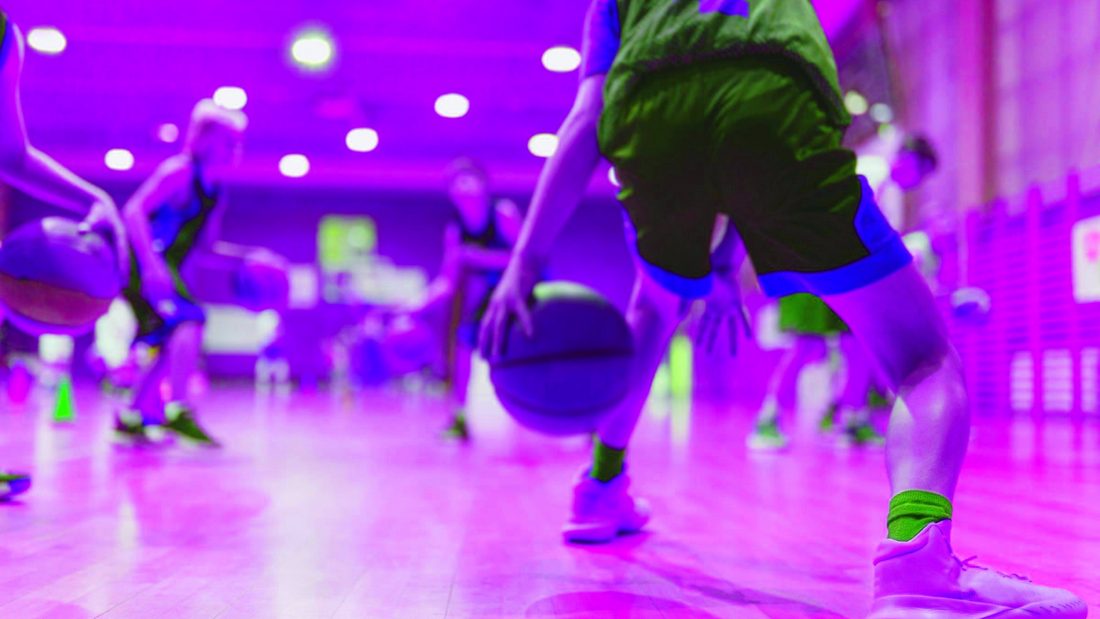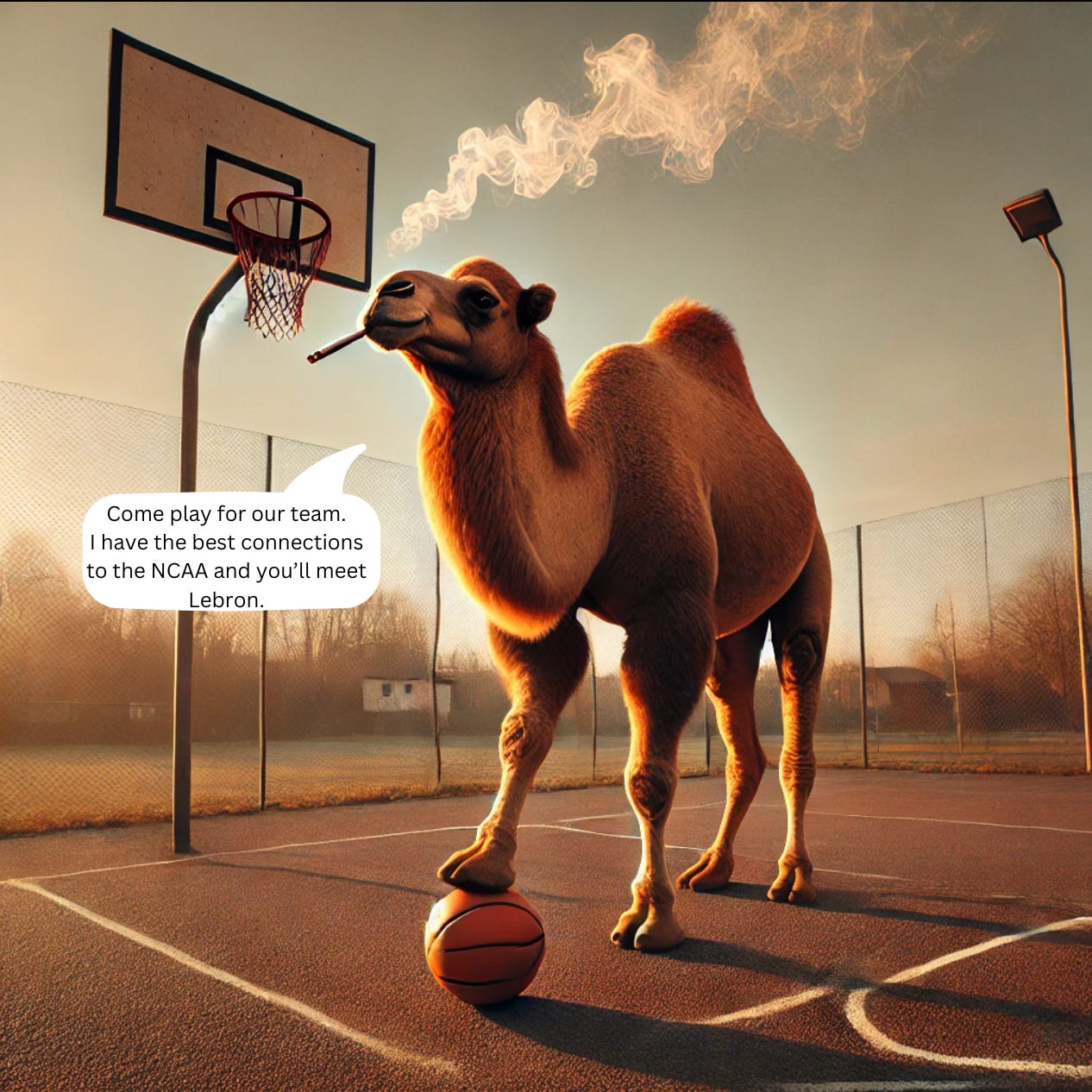Let’s talk about a dirty little secret in youth basketball: exposure is about money and not about athletes.
Ah yes, the almighty chase to be “seen”. It’s become the be-all and end-all for athletes, coaches, parents—heck, even whole basketball programs. Travel teams, social media highlights, and those God-forsaken “showcase” tournaments that squeeze seven-minute halves into a two-day circus of chaos. If you ask most in the grassroots basketball scene, they will share that some level of exposure is the ticket to the golden dream—scholarships, NBA contracts, Instagram followers, and a photo with LeBron. But what if this relentless pursuit of exposure is actually doing more harm than good?
Let me tell you something—it's killing true development.
The Exposure Trap: Less Practice, More Games
Let’s start with the basics. Kids aren’t practicing anymore. They’re playing endless games, but when do they actually truly PRACTICE?
According to a report from the Journal of Athletic Training, athletes who get at least one full rest day per week are far more likely to avoid burnout. Additionally, optimal practice to competition ratios are simply not possible in more exposure-focused team’s schedule. You don’t become a better shooter, passer, or defender by playing non-stop games—you get better by practicing the proper amount AND playing the proper amount. And with the non-stop churn of tournaments, these athletes aren’t getting better, they’re just getting “exposed”…for better or for worse.
But it’s worse than just lack of practice time. These “exposure” tournaments feature games that are, quite frankly, a joke. Seven-minute halves? You’ve got travel teams crisscrossing the continent to play four 14-minute games. This isn’t development, it’s a glorified pick-up game, where the main goal is to look good on camera for some scout who, by the way, isn’t even watching. As talked about in the book Sole Influence: Basketball, Corporate Greed, and the Corruption of America's Youth you’ll notice that scouts and coaches in attendance at these events spent more time networking and looking at players they already had in mind than evaluating new talent. So, you’re telling me these kids are sacrificing real training, mental development, and personal growth for a shot in the dark?
Not Joe Camel But Same Old Tricks
Let’s pull back the curtain on exposure basketball for a minute. If you think this whole system is really about helping young athletes develop and get seen by scouts, think again. What we’re actually looking at here is a slick marketing operation, one that borrows straight from the playbook of classic advertising and brand-building. The so-called “exposure” tournaments aren’t about creating opportunities for athletes—they’re about creating profits for the owners and operators who run the show. And they’ve mastered the art of selling parents and players on a pipe dream.
First, let’s talk about the basic marketing trick: scarcity. Exposure tournaments bill themselves as these exclusive events—“the place to be seen,” as if scouts are lurking around every corner with offers in hand. They slap a fancy name on the event, maybe bring in a semi-famous coach or player for a guest appearance, and suddenly, it’s an “elite” opportunity you can’t afford to miss. But guess what? There are dozens of these tournaments happening across the country every single weekend. The reality is, it’s not about scarcity; it’s about creating the illusion of scarcity to get parents and players to open their wallets.
And open their wallets they do. These tournaments cost thousands of dollars between registration fees, travel expenses, uniforms, and hotel stays. It’s a big business and, don’t kid yourself, all of the above are partners pursuing profit. According to multiple reports the youth sports industry in the U.S. is valued at over $19 billion, and $77.6 billion dollars globally by 2026. Let’s not kid ourselves, in many cases the people running these events aren’t concerned with player development. They’re concerned with maximizing profits. The more tournaments they can pack into a calendar, the more money they make. Whether those tournaments are actually helping the players is a secondary concern—if it’s a concern at all.
Now, here’s where the advertising angle really comes into play. Exposure basketball is selling a dream. The dream of a scholarship. The dream of going pro. The dream of making it big. Like the dream of being smart and healthy because you smoke cigarettes. They splash highlight reels and flashy photos across social media, showcasing that one kid who got a D1 offer at an event, and suddenly, every parent thinks, “That could be my kid.” It’s a classic bait-and-switch. Sure, one kid might get noticed—but the thousands of others are left with little more than memories of overpriced tournaments and not a single offer letter in sight.
The people running these operations have mastered the art of creating FOMO—Fear of Missing Out—another classic marketing technique. They dangle the carrot of exposure in front of parents and athletes, knowing full well that the majority of these kids won’t get scouted, let alone recruited. But the fear of being left behind drives parents to keep shelling out money. It’s like clockwork. They keep signing up for tournament after tournament, prep school after prep school, showcase after showcase, hoping that the next one will be the one that lands their kid on a coach’s radar.
In the meantime, these kids aren’t developing—they’re being sold to.
The system isn’t designed to foster growth or resilience, but to churn out dollars for the tournament organizers. As long as exposure basketball continues to rake in profits, the real focus—athlete development—will remain an afterthought.
Chasing Likes and Highlights, Not Skills
Let’s talk about social media for a minute. We’re in the age of TikTok dunks and Instagram highlights. Players spend hours trying to capture the perfect play on video so they can slap a filter on it and watch the likes roll in. They’re so busy curating their highlight reels, they forget to develop actual skills. Basketball isn’t a 15-second video. It’s a 40-minute game of endurance, strategy, and grit. But social media’s siren song has lured these young athletes into the shallow waters of fame-chasing, and it’s leaving their psychological and athletic development stranded on the rocks.
According to research published in Frontiers in Psychology, focusing too much on external rewards—like likes, views, or even attention from scouts—can cause young athletes to develop an “extrinsic motivation” mindset. Translation? They play to be seen, not to get better. This has a direct, negative impact on performance under pressure. When an athlete's self-worth is tied to external approval, their resilience crumbles at the first sign of failure. And guess what? The grind of competitive basketball requires the opposite—intrinsic motivation, where you’re driven to improve for your own sake. That's what produces real champions.
But exposure culture is killing the ability to build that motivation.
Psychological Skills Going Underdeveloped
Then there’s the psychological fallout. In the quest for exposure, what gets lost is the development of the athlete’s mind. The process of improving in sports requires more than just physical repetition—it demands mental growth. Resilience, self-discipline, and focus are all sharpened through intentional, structured development. When athletes are pulled in ten different directions trying to maximize exposure, that foundational mental development suffers.
Consider a 2018 study from the Human Kinetics Journal that explored how athletes develop psychological skills. The study emphasized that resilience, focus, and emotional regulation—the very skills that lead to long-term success—are cultivated through challenges faced in structured practice and meaningful competition.
The reality is that in today’s system of scattered, unregulated games, kids never get the chance to experience the kind of adversity that builds mental toughness. Instead, they’re constantly “on tour,” going from one tournament to the next, one Tik Tok to the next, hoping that a college scout in the back row notices their highlight-worthy dunk.
Spoiler alert: he won’t. Because that dunk isn’t that unique and the decisions won’t be made from any one “exposure”.
Exposure Doesn’t Equal Opportunity
And now, let’s debunk the biggest myth of all: exposure equals opportunity.
It doesn’t. Sure, you might catch the eye of a scout or coach once in a blue moon at one of these showcases, but even then, it’s unlikely to lead to a genuine opportunity. According to a 2022 survey from the National Association of Basketball Coaches, 80% of college coaches reported that the majority of their recruitment comes from direct evaluations, film reviews, and consistent performance over time—not from one-off exposure events. These coaches are looking for athletes with strong fundamentals, a developed game IQ, and the psychological resilience to handle the rigours of high-level competition. None of those things are being developed in the pressure cooker of travel ball.
Conclusion: Choose Development Over Exposure
So, here’s the punchline: this obsession with exposure is hollowing out our next generation of basketball players. The game is suffering because kids are chasing attention instead of development. Sure, attending these events and being on these teams is great if everyone knows it’s just for fun. But it’s the exposure façade that is a huge problem.
They’re skipping practices, playing shortened, low-quality games, and missing out on the real tools—both mental and physical—that build long-term success. They’re being advertised to and not building personal relationships that help their individual development. The road to becoming a great athlete isn’t through endless games and social media likes; it’s through the grind, the repetition, and the focus that only structured, intentional development can provide.
We need to stop chasing exposure and start chasing growth.
If you don’t believe it, look at this compare and contrast between the exposure model and a more Euro-style model of development here.


